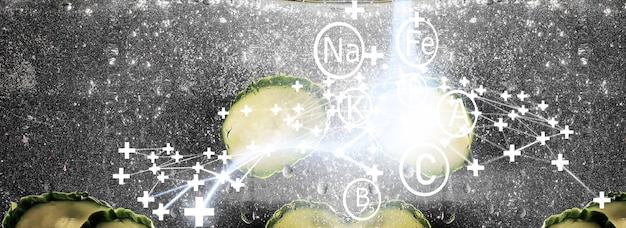Analyzing the Consequences: Changes to US Intellectual Property Laws

Analyzing the potential consequences of changes to US intellectual property laws involves examining how these shifts could impact innovation, economic growth, international trade, and the balance between creators’ rights and public access to information.
Intellectual property laws in the United States are constantly evolving, and understanding the potential impacts of these changes is crucial. This article delves into analyzing the potential consequences of changes to US intellectual property laws, exploring how they could reshape innovation, economic growth, and the balance between creators’ rights and public access.
Understanding the Framework of US Intellectual Property Laws
The foundation of US intellectual property laws is critical to grasp before diving into potential changes. These laws, including patents, copyrights, and trademarks, are designed to protect the rights of creators and incentivize innovation.
Understanding these laws ensures that anyone can navigate the intricacies of IP rights and potential reforms.
Patents: Protecting Inventions
Patents grant inventors exclusive rights to their inventions for a set period, typically 20 years. This protection prevents others from making, using, or selling the invention without permission.
Copyrights: Safeguarding Creative Works
Copyright protects original works of authorship, such as books, music, and films. It grants creators exclusive rights to reproduce, distribute, and display their work.
- Encouraging Innovation: IP laws incentivize creativity and investment in new technologies.
- Economic Growth: Strong IP protection can drive economic growth by fostering a competitive marketplace.
- Public Access: Balancing IP rights with public access ensures that knowledge and creativity remain accessible.

In conclusion, understanding the existing framework of US intellectual property laws is essential for assessing how potential changes could impact innovation, economic growth, and public access to information. This foundation sets the stage for analyzing specific changes and their effects.
Potential Shifts in Patent Laws and Their Ramifications
Changes in patent laws can have far-reaching effects on industries and innovation. The US patent system is constantly under scrutiny, and reforms are often proposed to address issues such as patent trolls and the high cost of litigation.
These shifts can influence everything from pharmaceutical development to technological advancements.
Impact on Pharmaceutical Innovation
Patent law changes can significantly affect the pharmaceutical industry, particularly regarding drug development and pricing. Alterations to patent terms or eligibility criteria can influence how quickly new drugs come to market and their affordability.
Effects on Technology Companies
Technology companies rely heavily on patents to protect their inventions. Changes in patent laws can impact their ability to secure and enforce patents, potentially affecting their competitive advantage.
These reforms can either hinder or promote innovation, depending on their design and implementation.
- Increased Litigation: Weaker patent protection can lead to more lawsuits as companies fight to protect their inventions.
- Reduced Investment: Uncertainty in patent laws can deter investment in research and development.
- Faster Innovation: Some reforms aim to streamline the patent process, potentially accelerating innovation.
In conclusion, examining potential shifts in patent laws reveals the complex interplay between innovation, economic incentives, and legal frameworks. These changes can have profound effects on both pharmaceutical and technology companies, influencing their ability to innovate and compete.
Copyright Law Revisions: Navigating the Digital Age
Copyright law is continuously evolving to address the challenges and opportunities presented by the digital age. Revisions to copyright law often focus on issues related to online content, digital rights management, and fair use.
These revisions must balance the rights of creators with the public’s interest in accessing and using copyrighted material.

The Fight Against Digital Piracy
Copyright law revisions often aim to strengthen protections against digital piracy and unauthorized distribution of copyrighted material. This can involve measures to combat online infringement and hold digital platforms accountable.
Fair Use and Educational Purposes
Fair use is a key exception to copyright law that allows for certain uses of copyrighted material without permission, such as criticism, commentary, news reporting, teaching, scholarship, and research.
These challenges require ongoing adjustments to copyright law to ensure it remains relevant and effective.
- Creator Compensation: Ensuring that creators are fairly compensated for their work in the digital age.
- Balancing Interests: Striking a balance between protecting copyright holders and promoting innovation and education.
- Adapting to Technology: Keeping copyright law current with rapidly evolving digital technologies.
In conclusion, copyright law revisions are essential for navigating the digital age. Balancing the rights of creators with the public’s interest in accessing and using copyrighted material is a complex task that requires ongoing adaptation and reform.
Trademark Amendments and Brand Protection Strategies
Trademarks are essential for protecting brand identity and preventing consumer confusion. Amendments to trademark law often focus on issues such as online infringement, counterfeit goods, and the protection of non-traditional trademarks.
These amendments can significantly impact how businesses protect and enforce their brand rights.
Combating Online Infringement
Online infringement is a growing concern for trademark owners. Amendments to trademark law often aim to strengthen protections against online infringement, including measures to combat cybersquatting and the sale of counterfeit goods online.
Protecting Non-Traditional Trademarks
Non-traditional trademarks, such as colors, sounds, and scents, can be valuable assets for branding. Amendments to trademark law may clarify the requirements for protecting these types of trademarks.
These strategies help businesses maintain their brand equity and reputation.
- Brand Value: Protecting the value and reputation of a brand.
- Consumer Trust: Preventing consumer confusion and ensuring that consumers can trust the authenticity of products and services.
- Global Protection: Ensuring that trademarks are protected in international markets.
In conclusion, trademark amendments and brand protection strategies are essential for safeguarding brand identity and preventing consumer confusion. These changes can have significant implications for businesses operating in both domestic and international markets.
Economic Consequences of Altered IP Legislation
Changes to intellectual property legislation can have profound economic consequences, affecting innovation, investment, and international trade. The economic impact of these changes can be felt across various industries and sectors.
Understanding these consequences is crucial for policymakers and businesses alike.
Impacts on Innovation and Investment
Strong intellectual property protection can incentivize innovation and investment by providing creators and businesses with exclusive rights to their inventions and creations. Changes that weaken IP protection may reduce these incentives.
Effects on International Trade
Intellectual property rights play a significant role in international trade. Countries with strong IP protection tend to attract more foreign investment and engage in more trade of IP-intensive goods and services.
These outcomes shape the competitive landscape and economic growth.
- Job Creation: Strong IP protection can lead to job creation in innovative industries.
- Economic Growth: IP-intensive industries contribute significantly to overall economic growth.
- Global Competitiveness: Effective IP laws help countries compete in the global marketplace.
In conclusion, the economic consequences of altered IP legislation are significant and far-reaching. Policymakers must carefully consider these impacts when making changes to intellectual property laws.
Balancing Creator Rights and Public Access
One of the central challenges in intellectual property law is balancing the rights of creators with the public’s interest in accessing and using creative works. This balance is essential for fostering innovation and promoting cultural exchange.
Finding the right equilibrium ensures that both creators and the public benefit from intellectual property laws.
The Role of Fair Use and Exceptions
Fair use and other exceptions to copyright law play a critical role in balancing creator rights with public access. These provisions allow for certain uses of copyrighted material without permission, such as criticism, commentary, news reporting, teaching, scholarship, and research.
Promoting Innovation and Creativity
Striking the right balance between creator rights and public access is essential for promoting innovation and creativity. Strong IP protection can incentivize creativity, but overly broad protection can stifle innovation by limiting access to existing knowledge and creative works.
These considerations guide the ongoing evolution of intellectual property law.
- Encouraging Creation: Providing creators with sufficient incentives to create.
- Promoting Access: Ensuring that the public has access to knowledge and creative works.
- Fostering Innovation: Striking a balance that promotes both creation and innovation.
In conclusion, balancing creator rights and public access is a complex but essential task in intellectual property law. Finding the right equilibrium ensures that both creators and the public benefit from these laws, fostering innovation and promoting cultural exchange.
| Key Aspect | Brief Description |
|---|---|
| 📜 Patent Law Changes | Reforms affecting pharmaceutical innovation and technology companies. |
| ©️ Copyright Revisions | Updates to address digital piracy and balance fair use. |
| ®️ Trademark Amendments | Strategies for combating online infringement and protecting brand identity. |
| ⚖️ Economic Impact | Consequences on innovation, investment, and international trade. |
Frequently Asked Questions
▼
The main types of intellectual property are patents, which protect inventions; copyrights, which protect original works of authorship; and trademarks, which protect brand names and logos.
▼
Changes in patent law can influence drug development timelines, market exclusivity, and pricing, potentially affecting the profitability and innovation incentives for pharmaceutical companies.
▼
Fair use allows limited use of copyrighted material without permission for purposes such as criticism, commentary, news reporting, teaching, scholarship, and research.
▼
Trademarks protect brand identity, prevent consumer confusion, and ensure customers can trust the authenticity and quality of products and services associated with a particular brand.
▼
Countries with strong IP protection tend to attract more foreign investment and engage in more trade of IP-intensive goods and services, enhancing their global competitiveness.
Conclusion
In conclusion, analyzing the potential consequences of changes to US intellectual property laws requires a comprehensive understanding of patents, copyrights, and trademarks. These changes can significantly impact innovation, economic growth, and the balance between creator rights and public access. Careful consideration of these factors is essential for policymakers and businesses alike to navigate the evolving landscape of intellectual property legislation.





